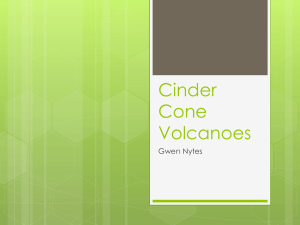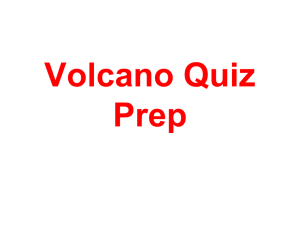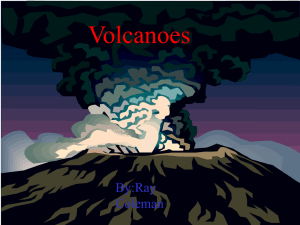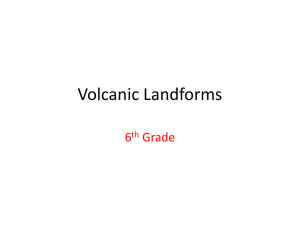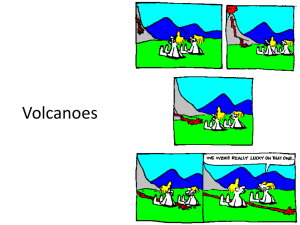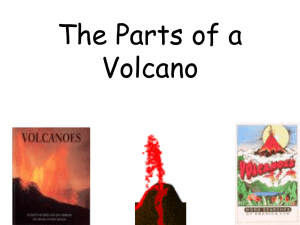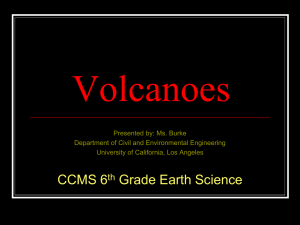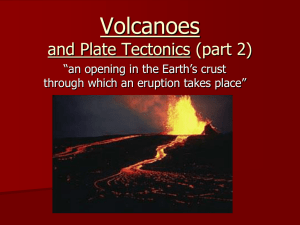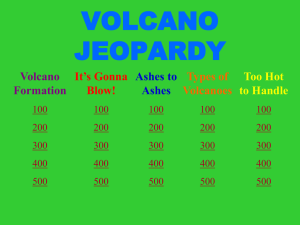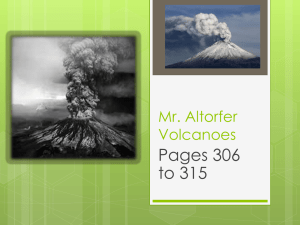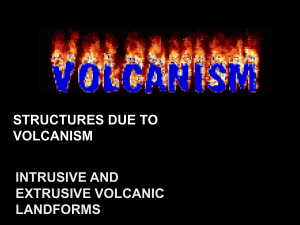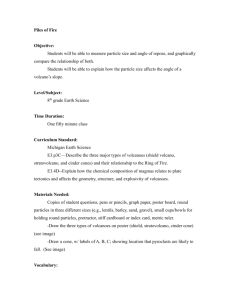Types of Volcanoes
advertisement
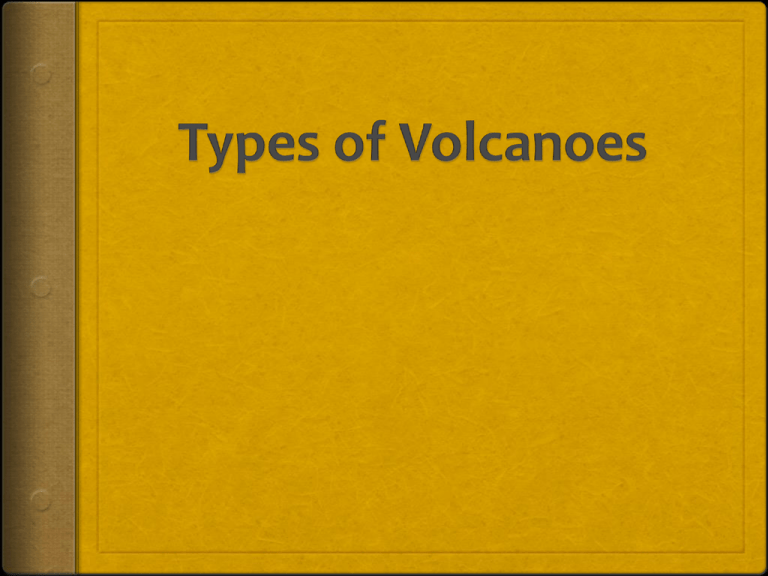
Frequency and Quantity There are ~ 550 historically active volcanoes About 60 erupt annually The majority are 1) at the edge of continents and 2) underwater Dormant volcanic cone in Japan What causes volcanoes? Underwater Volcanoes Rift valley plate plate magma Mid ocean ridges Mid ocean ridge Mid ocean ridges Are continuous underwater mountain ranges Are formed by rising magma Cause sea floor spreading Form a rift valley between spreading plates Pillow lava at mid ocean ridge Hot Spots Hot spots create chains of islands like the Hawaiian islands or the Aleutian chain. Hawaiian Islands – hot spot Land Based Volcanoes A volcano at the edge of a continent Mid ocean ridge Sinking plate ? Melted rock forming magma Three Types of Land Based Volcanoes Volcanoes take different shapes depending on the amount of SILICA and DISSOLVED GASSES in the magma High Silica content… High Dissolved Gas content… More likely to be explosive!!! More gas comes out, an eruption can launch ash and debris great distances Why? Silica has a thick, stiff consistency Flows slowly Tends to Harden in the volcano’s vent However, if lava is viscous and flows quickly, these eruptions may not be that dramatic What Erupts from a Volcano? Blocky lava Lava can be thick or thin. Pahoehoe Aa Pillow lava What Erupts from a Volcano? Pyroclastic material • Rock fragments created by eruptions •magma explodes from volcano and solidifies in the air •existing rock is shattered by powerful eruptions Lapilli Volcanic bombs Volcanic blocks Volcanic ash Let’s see it in action http://environment.nationalgeographic.com/environ ment/natural-disasters/forces-ofnature.html?section=t Shield Volcanoes Volcanoes that build up from many slow, steady, flows of hot lava, are called shield volcanoes. This kind of volcano is low and broad with gently sloping sides. They look like a warriors shield. They have LOW silica content and LOW dissolved gases. Unlikely to yield massive explostions Shield Volcanoes Cinder Cone Volcano Cinder cone volcanoes form when solid rock and ash shoot up into the air and fall back around the volcano opening. The cinder cone volcano has steeply sloped sides. Cinder cone volcanoes have LOW silica content and HIGH dissolved gas content Cinder cones can have violent eruptions, but are unlikely to send ash or lava too far Cinder Cone Composite Volcano Composite volcanoes, erupt with molten lava, solid rock, and ash. The layers pile up much like layers of cake and frosting. The layers form into symmetrical cones, and the slopes are steep. Composite volcanoes have HIGH silica content and HIGH dissolved gas. Composite volcanoes erupt violently and can send ash and lava great distances Composite Volcano Composite Volcano Mt St Helens one day before eruption Mt St Helens 4 months after eruption Another before… …and 2 years later Now, it is your turn. Pick a type of volcano and build it out of clay. Then, we are going to make TOPOGRAPHIC MAPS.





